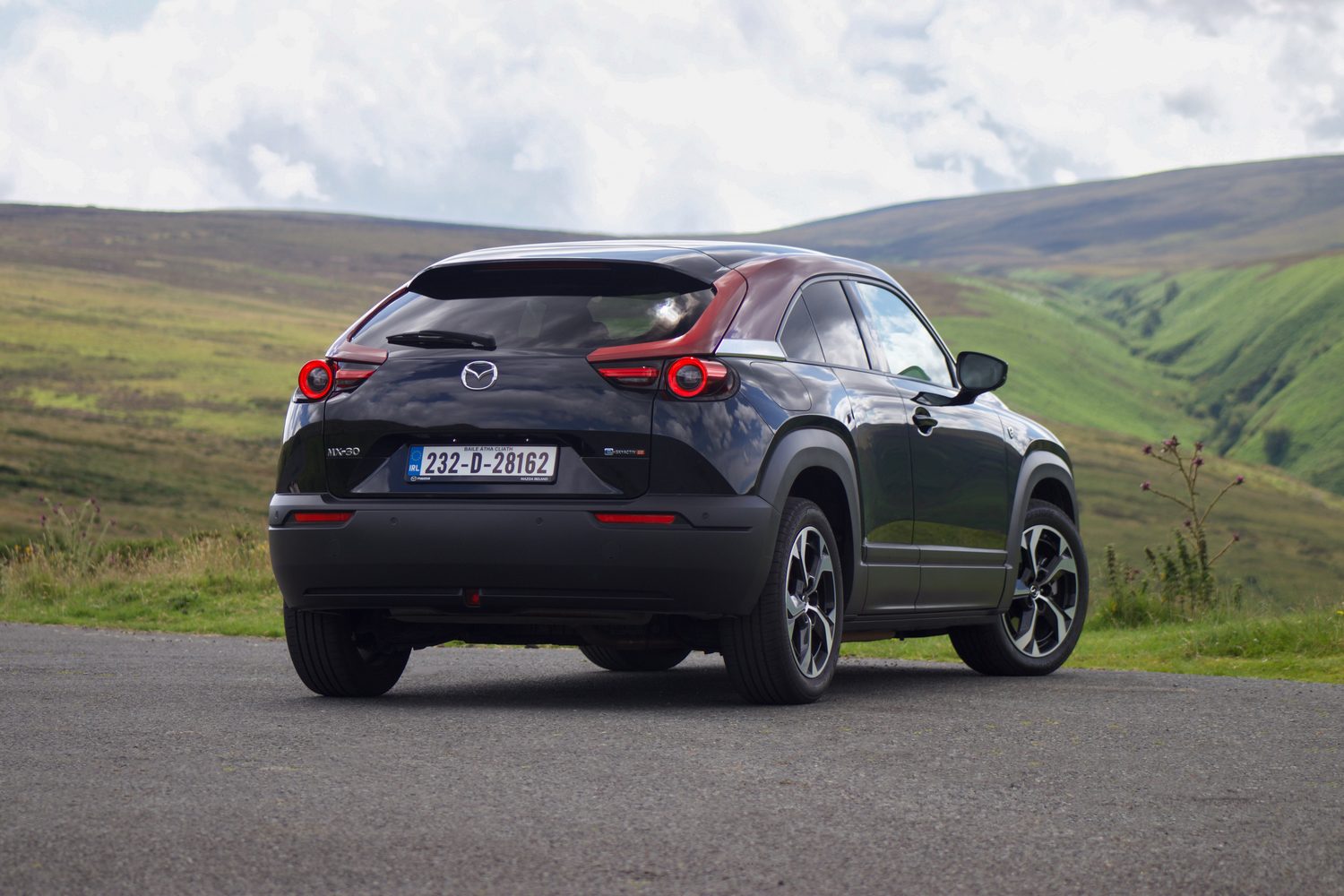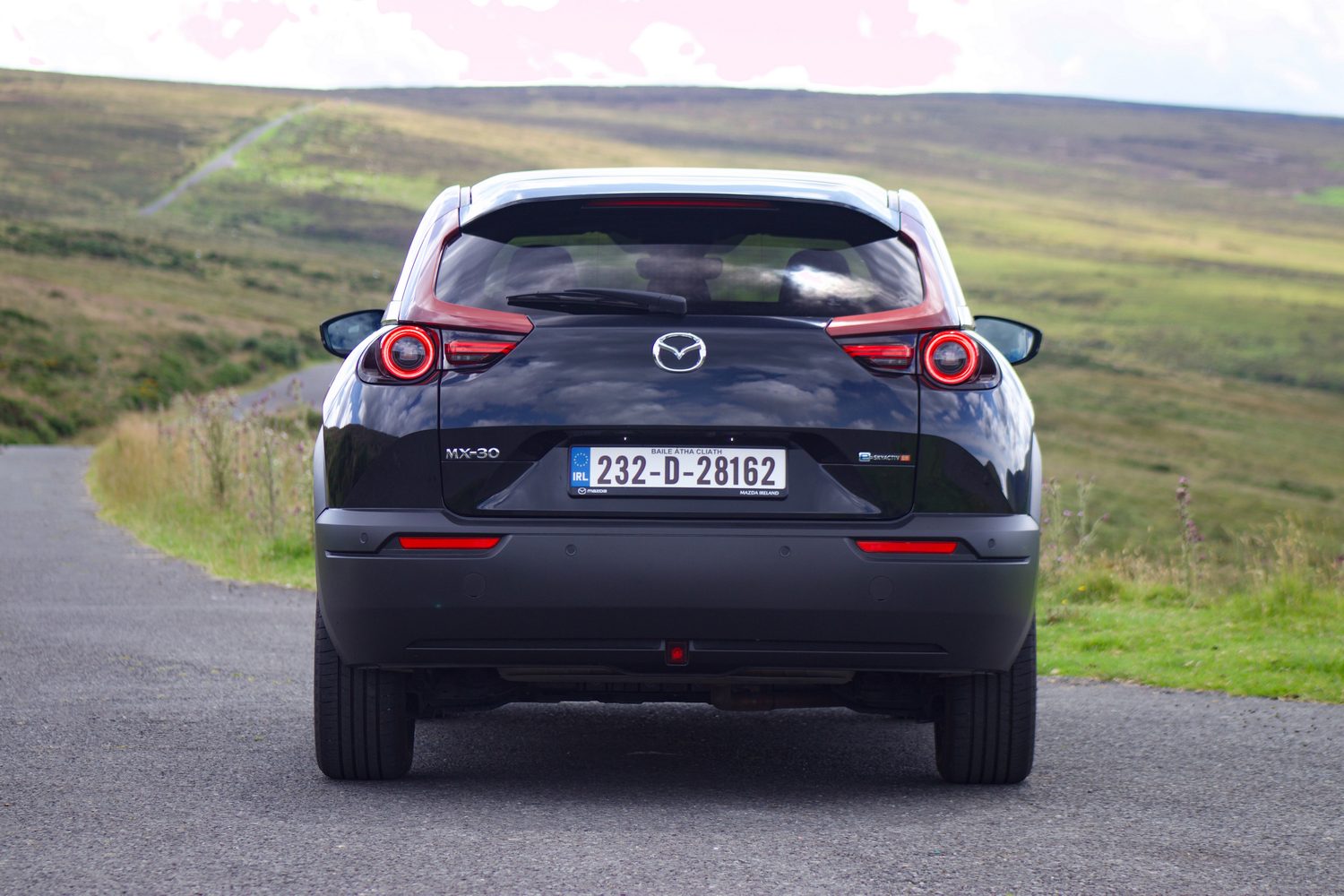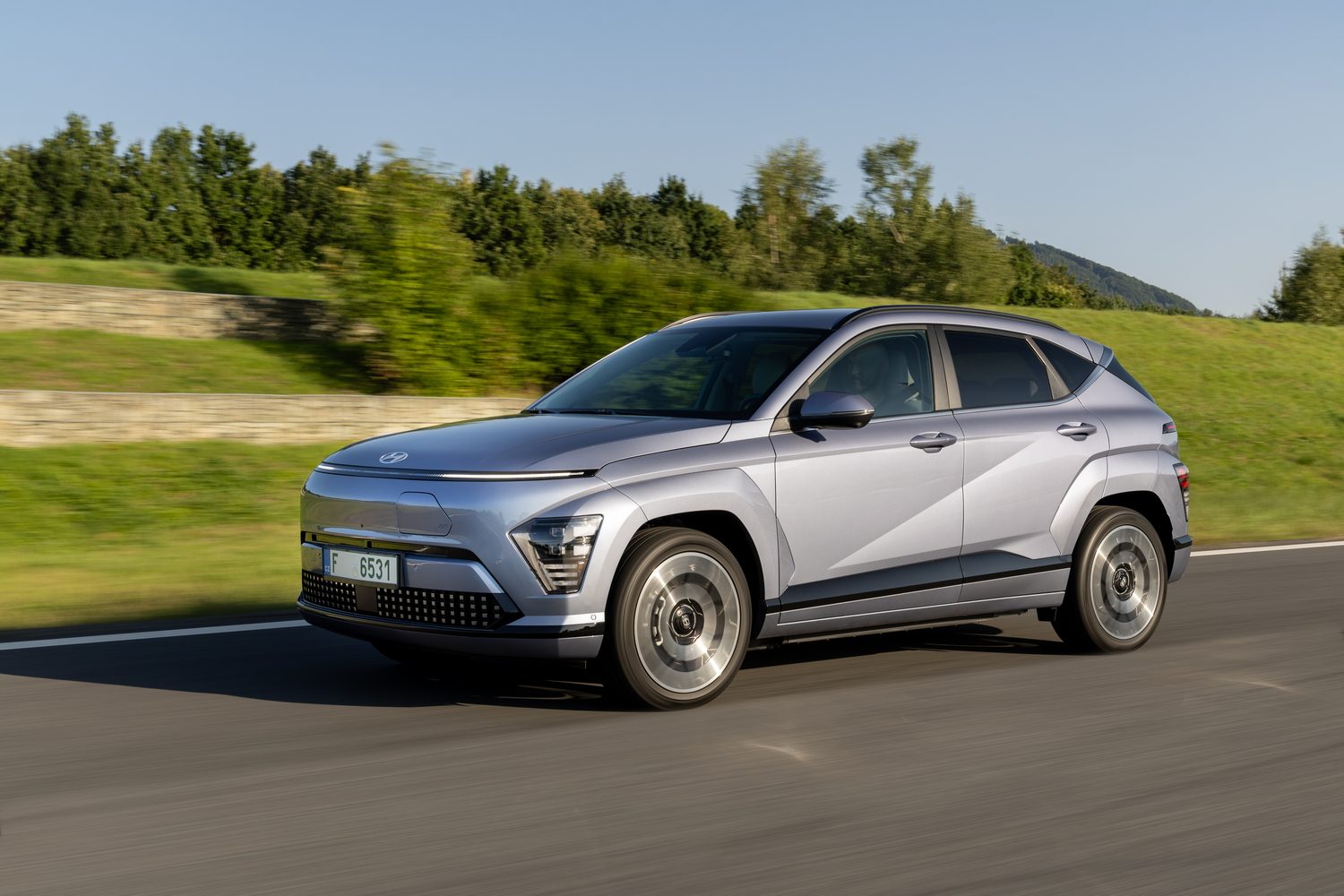Are you one of those people who still quietly mourns the demise of Saab? And I don’t mean the dull General Motors era cars, I mean the original egg-shaped, two-stroke, free-wheeling ones made by a company that got bored with making fighter jets. Are you someone who in a quiet corner of the house has assembled a small grotto with some candles and incense and a photograph of a 1999 Fiat Multipla? Then, like me, you may be someone who has a high level of tolerance, perhaps even a passion for, quirky cars.
I adore cars that take a sharp left away from the mainstream. It’s fair to ask where we’d all be without the nice safe options of a Corolla, a Golf, or a Tucson, but without the Saab 95s and Multiplas of this world, motoring would be a lot more boring.

Hence my spirits lifted a little when the Mazda MX-30 R-EV arrived outside the house. Mazda originally introduced the little electric crossover as a way of saying “look, you don’t need to buy big, heavy EVs with big, heavy batteries - buy something more compact and lighter and just charge it up more often!” Alas, Mazda’s words went unheard, and people instead bought lots of big, hefty electric cars with massive batteries. Which is, in many ways, the wrong thing to do, but equally buying an electric car with more range than you regularly need is a realistic solution in a world where public charging is still - to this day - sclerotic, expensive, unreliable and geographically inconsistent. The original all-electric MX-30 was built for a better world that just doesn’t exist yet.
So, Mazda has had another crack at the whole MX-30 thing. Upset that a 265km-ranged MX-30 just isn’t long-legged enough? That’s OK, says Mazda. Here - we’ll cut the battery capacity more or less in half, leaving you with 85km.
How does that help? Ah, well Mazda has while looking to the electric future also had a dip back into its petrol past because this MX-30 R-EV has a rotary engine. That’s right - there’s a direct line of succession between this, the RX-8, the mighty RX-7 and even the quirky (that word again...) RX-3 and REPU rotary pick-up. The difference here is that the dinky 830cc rotary tucked into the MX-30’s nose doesn’t ever actually drive the car. It’s there as a range-extender, topping up the charge of the 17.8kWh battery pack as you go, keeping you mobile when you stretch beyond the 85km electric-only range. It’s a neat package, a nice idea and potentially a solution to the lack of public charging, plus it nods the head towards Mazda’s future plans to run cars on synthetic, carbon-neutral fuels.

How much is the Mazda MX-30 R-EV in Ireland?
The standard all-electric MX-30 starts at €42,930. The R-EV is... slightly more expensive, from €43,021.
Both of those models start with Prime-Line trim, which includes 18-inch alloy wheels, blind spot monitoring, keyless entry, front and rear parking sensors, and a reversing camera.
You can upgrade to Exclusive-Line trim for €44,532 for the electric MX-30 and €44,621 for the R-EV. That comes with heated front seats with part leather trim, and a different design of 18-inch alloy.

Next up is Makato trim, which costs €47,949 for the electric version and €48,538 for the R-EV. That includes a 360-degree parking camera, adaptive LED headlights, 12-speaker Bose stereo, driver monitoring, front cross traffic alert, built-in navigation, radar cruise control and rear smart brake support.
Finally, the range-topper and coming in R-EV only form is the Edition-R, which is the model we’re testing here. Costing a hefty €50,638 it comes with black-finished diamond-cut alloys, half-leather trim with embossed headrests, rear ‘signature’ lights and traffic jam support for the adaptive cruise control. It also comes only in a deep metallic black with a contrasting dark red roof (which Mazda calls, delightfully, Maroon Rouge Multitone).
A look inside the Mazda MX-30
If you thought the quirkiness would begin and end with the rotary engine, you were very much mistaken. Before you even climb into the MX-30’s cabin, you’re confronted with more quirk in the shape of the ‘Freestyle’ doors. The MX-30 is technically a five-door crossover, but the back doors are both small, rear-hinged and can only be opened once you’ve opened the front doors. It’s like an ambidextrous MINI Clubman. Or just a BMW i3 if you prefer (yet another brilliantly quirky car, which was also a range-extender for a time).

The cabin is quite dark - thank the Edition-R-specific black leatherette trim for that - but there’s a touch of warmth in the cork trim on the centre console. Cork? Yes, real cork - you could push a pin into it. Mazda began life as the Toyo Cork Kogyo Co. Ltd, a Hiroshima-based concern owned by Jujiro Matsuda. The company didn’t make its first car - a cross between a small truck and a motorbike, rather like a Japanese take on a Piaggio Ape, called the Mazda-Go Rickshaw - until 1931. The MX-30’s cork trim is a little tip of the hat to that history.
Elsewhere, there’s a pleasant tweed-like trim on the door panels and overall build quality - as you’d expect from a Mazda - seems excellent. The cork panels on the centre console open to reveal cupholders, and there’s ample storage space both under the centre console (in a cork-lined tray) and under the front seat armrest. Under the console you’ll also find USB sockets and a domestic-style plug socket.

The driving position, on slightly over-stuffed front seats, is comfortable and well sorted, and the slim-rimmed steering wheel feels good to hold. The MX-30 falls down when it comes to space, however. Those rear-hinged doors are quite narrow, and even though you can open the whole side of the car, accessing the rear seats is tricky simply because there’s not much space in there. Legroom is quite limited unless those in the front are prepared to shimmy up, and even then, the small side windows leave those in the back feeling hemmed in.
The boot is also quite small at 350 litres which is about on the class average, but many rivals offer considerably more luggage room, and if you’ve picked a model with the (quite brilliant) Bose stereo, you’ll lose even more space to a chunky sub-woofer, leaving you with just 332 litres.
The Mazda MX-30 on-board technology
The part-digital, part-analogue dials behind the wheel are lifted more or less directly from the current Mazda3 hatchback and CX-30 crossover, and while they’re perhaps not as versatile as the full-width screens found in some other cars, they are very handsome and far easier on the eyes on a long night-time drive. You can select different trip computer displays via slim buttons on the steering wheel, and these are refreshingly simple to use.

The infotainment screen is a shallow 8.8-inch unit mounted on top of the dashboard and is too far away to be operated by touching it. That’s because Mazda still prefers to stick with a BMW-style click-wheel controller, mounted on the centre console just behind the gear lever. If you’ve just stepped out of a car with a big touchscreen, it may take a while for your muscle-memory to reset to using a physical controller, but while it might seem like a backwards step, Mazda says that it sticks with this system because it’s more intuitive and safer to use when you’re on the road. In our experience, that bears out and frankly Mazda should be commended for sticking with a tactile, physical controller.
Oddly, there is a touchscreen, and it’s located further down on the centre console - it’s for the air conditioning controls and it works well enough, but oddly most of the major controls on that screen are also duplicated with physical buttons elsewhere. It’s a strange setup and you can’t help but think that the pleasantly tactile physical switches that the CX-30 uses for its air-con panel would have done a better job all-round.
Back on the main infotainment screen, Mazda’s own software is slightly clunky both in look and function, but it’s refreshingly simple compared to the often too-byzantine menu layouts of many rival systems. Apple CarPlay and Android Auto connections are standard.

Driving the Mazda MX-30 R-EV
Just to be clear, the MX-30 R-EV is not a plug-in hybrid in the traditional sense. A ‘regular’ plug-in hybrid has a rechargeable battery which, once it has been depleted, turns over propulsion of the car to the petrol or diesel engine, which drives the wheels directly.
The MX-30 is a range-extender, which means its little rotary engine - which only has a 75hp output anyway - never actually drives the MX-30’s front wheels. It’s there purely as a generator, to top up the battery charge to keep the 170hp electric motor turning.
In pure performance terms, it’s not bad and the motor - with a healthy 260Nm of torque - copes well enough with the MX-30’s 1,778kg kerb weight. Rotary motors are famed for their smoothness, hence the thinking at Mazda that one would make an ideal range-extending generator, able to fire up and charge the battery without disturbing the peace of the cabin. For the most part, this is how it plays out and the MX-30 is reasonably refined, even when the engine is churning away to keep the battery going at motorway speeds.

However, there are occasional little whistles and warbles, which aren’t unpleasant, but which will sound odd for the first few times until you get used to them. There is also a tendency for the engine to drone slightly at higher cruising speeds, but to combat that you can just turn the Bose stereo up a bit.
Around town, the MX-30’s very comfortable ride quality does a good job of taking the edges off urban lumps and bumps, and when you’re on a more open road it feels steadfast and sure-footed, with steering that feels impressively sharp and well-tuned.
The downside is its weight. While it’s not an excessively heavy car per se, the MX-30’s kerb weight does catch up with it in corners, making it feel less agile and adjustable than might otherwise be the case. Mazda has a tremendous rep when it comes to creating cars that feel slick and rewarding to drive - not just the MX-5, but also its regular hatchbacks, saloons and SUVs - so it’s slightly disappointing to note that in this regard, the MX-30 feels fine, but nothing more than that, and that’s in spite of standard-fit ‘Electronic G-Vectoring Control Plus’ which can adjust the electric motor’s torque and power outputs in millisecond bursts to achieve a smoother turn-in to a corner.
How economical is the Mazda MX-30 R-EV?
How economical the MX-30 R-EV proves to be will depend hugely - almost entirely - on how diligently you charge up its small battery, and how many long journeys you undertake.
The official 85km range on electric power alone seems reasonable enough, and we easily managed to squeeze 75km out of a full charge across a mix of roads and speeds. However, Mazda’s quote of a 680km total petrol-plus-battery range seems optimistic. Given that the MX-30 R-EV does become noticeably thirsty on long motorway runs - circa 7.0 litres per 100km - we’d say 500km on a combined electric and combustion drive would be more like it.

That’s at best a match, and sometimes behind, similarly priced fully electric cars, but of course the MX-30 R-EV’s advantage is that you can just top up the 50-litre fuel tank in minutes and get back on the road if you’re in the midst of a long run, or you just want to get home without needing to stop and charge. It’s a tempting kind of ability that, and you can see why car makers - and customers - seem currently keener on the idea of plug-in hybrids than fully-electric models.
The MX-30’s battery can be topped up as you drive, although of course that will cause your fuel consumption to spike. You can set the battery charge level that you want to achieve in ten per cent increments.
When charging the battery from an external source, the MX-30 R-EV can charge at up to 11kW on AC power, taking a mere 50 minutes to fully charge the battery at that rate. From a fast DC charger, it can accept up to 36kW, giving an 80 per cent charge in 26 minutes.
How safe is the Mazda MX-30?
Mazda is matching the likes of Volvo and Mercedes when it comes to safety these days. The MX-30, when tested by Euro NCAP, scored a maximum five-star rating, with a 91 per cent score for adult occupant protection, 87 per cent for child occupants, 68 per cent for vulnerable road users and 73 per cent for active safety systems.
The reasons you'd buy a Mazda MX-30 R-EV

Once again, we must return to that word - quirky. If you don’t have a high capacity for quirkiness, then the Mazda MX-30 R-EV is possibly not for you. It’s a car which is compromised by a devotion to being different. Those rear-hinged doors, the rotary range extender engine and the distinctive styling all add up to a somewhat polarising car. There is also an argument that for the money Mazda is asking, the MX-30 is just too expensive compared to a fully electric model with a lengthy one-charge range. That, though, is to ignore the MX-30 R-EV’s inherently greater flexibility when it comes to longer journeys, and equally to ignore its charm. It’s far from a perfect car, but it has a sense of character and a sense of difference that make it quite appealing.
Ask us anything about the Mazda MX0-30 R-EV
If there’s anything about the Mazda MX-30 we’ve not covered, or you’d like advice in choosing between it and other vehicles, you can avail of our (completely free) expert advice service via the Ask Us Anything page.
































